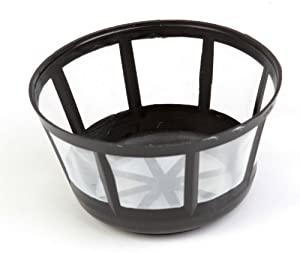Zintrigue
Senior Member
This is my first kit so there's a lot I don't know here. I got told not to be shy about asking or being a bother, so here we go.
-Sanitizing: How important is this "One-Step," or oxygen wash? Can I just use dishsoap to get debris off and then use the sodium metabisulphite for sanitizing?
-Sediment: I can't tell how close I am to the bottom when I siphon. I hate the idea of leaving good wine behind in the fermenting jar, but I can't see through the wine to see how close I am. Do I bump the bottom to get an idea and go from there? The instructions say that if I disturb the sediment then I need to let the wine sit for a week and try again. Seems a bit extreme to me, especially when "time is of the essence."
-What in the world is Kieselsol?
-Degassing: I have a fancy stirring paddle with holes in it. When I "stir vigorously" to remove bubbles, is there supposed to be a bunch of foam on top of the wine or am I ruining a good thing here?
-What's Chitosan?
-Topping up: Some part of me is kicking and screaming at the idea of adding water to my wine just to make it "one gallon." I mean, we're watering down a beautiful thing here. Is this step necessary? Seems to me like they have that in there to guarantee that the customer gets five full bottles of wine from the kit without complaints, but I'm not a mouth-breather, I realize that there are variables in the process.
That's all I have for now. More to come when I start the Dragon Blood.
Thanks,
-Zintrigue
-Sanitizing: How important is this "One-Step," or oxygen wash? Can I just use dishsoap to get debris off and then use the sodium metabisulphite for sanitizing?
-Sediment: I can't tell how close I am to the bottom when I siphon. I hate the idea of leaving good wine behind in the fermenting jar, but I can't see through the wine to see how close I am. Do I bump the bottom to get an idea and go from there? The instructions say that if I disturb the sediment then I need to let the wine sit for a week and try again. Seems a bit extreme to me, especially when "time is of the essence."
-What in the world is Kieselsol?
-Degassing: I have a fancy stirring paddle with holes in it. When I "stir vigorously" to remove bubbles, is there supposed to be a bunch of foam on top of the wine or am I ruining a good thing here?
-What's Chitosan?
-Topping up: Some part of me is kicking and screaming at the idea of adding water to my wine just to make it "one gallon." I mean, we're watering down a beautiful thing here. Is this step necessary? Seems to me like they have that in there to guarantee that the customer gets five full bottles of wine from the kit without complaints, but I'm not a mouth-breather, I realize that there are variables in the process.
That's all I have for now. More to come when I start the Dragon Blood.
Thanks,
-Zintrigue










![[Upgraded] 9Pcs Tree Root Growing Box with Drain Holes, Half Transparent Plant Rooting Propagation Ball & Metal Core Twist Ties, for Fast Propagation Plants (Size M)](https://m.media-amazon.com/images/I/514MWQxtWOL._SL500_.jpg)












































